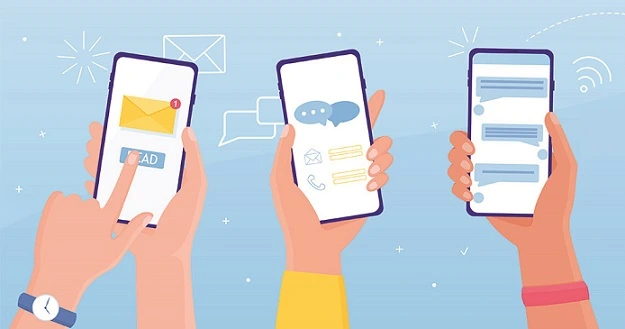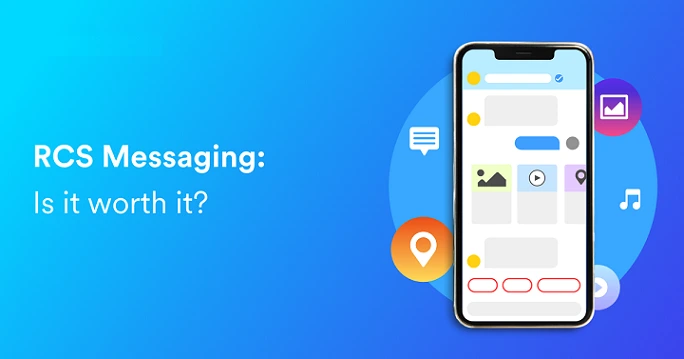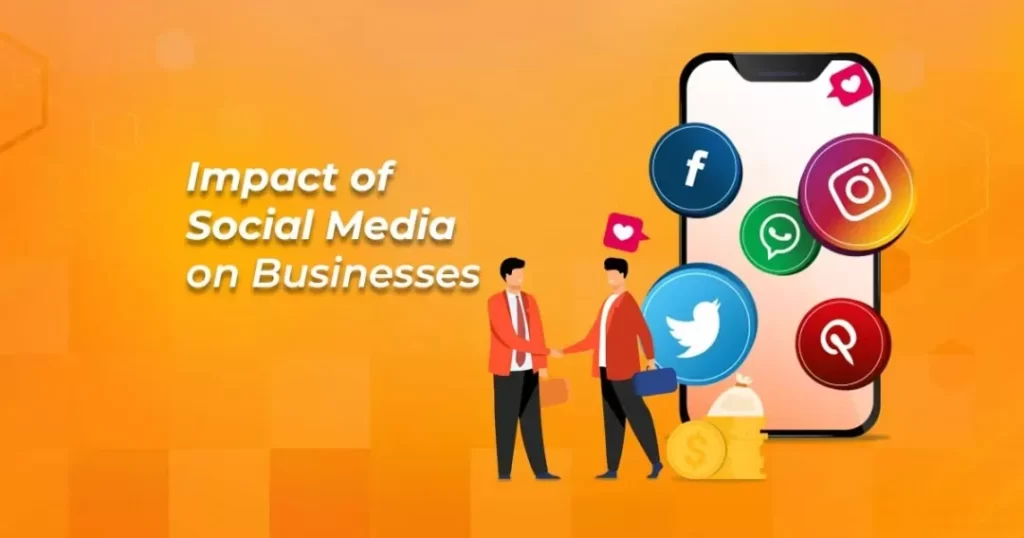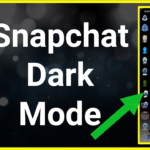Social media has a profound impact on businesses, carrying both positive and negative consequences. Are you in agreement? An overwhelming 90% of businesses acknowledge its significance. According to Ambassador, 71% of consumers who had a positive social media interaction with a brand are likely to recommend it to others.
These statistics highlight the utmost importance of social media for businesses. From the point of view of business communication, social networks are also important, although their value is often underestimated. We will focus more on this aspect of social networks in business.
Mobile Trends In Business Communication
The widespread acceptance and usage of online media platforms have revolutionized traditional business communication. For instance, companies now prefer email marketing campaigns over direct mailings or printed newsletters due to their speed and cost-effectiveness. Instant messaging platforms like WhatsApp and VoIP Text Messaging have also transformed how we communicate and conduct business.
The dependence on mobile devices for business communications increases the demands on device performance. The fastest way to speed up your smartphone is to use CleanUp Cleaner. With app cleaner, you can remove junk from your device and free up memory. If you clean your phone apps, you can free up to 20% of your memory. In conditions of increased demands on smartphones, phone cleaners have become a necessity.
1. SMS To Attract Traffic

To achieve your marketing goal of increasing website visits, prioritize mobile as a crucial part of your strategy. According to Statista, over 54% of website traffic occurs on mobile devices. It has never been more important to prioritize mobile. This trend aligns well with SMS, a mobile-native technology that reaches users directly on their phones and prompts them to click on mobile links.
By using UTMs, website owners can easily track the percentage of traffic coming from text message campaigns and measure conversions. Analyzing these metrics will help business owners develop future campaigns that emphasize SMS and text messages.
2. More Attention To In-App Messaging
With a staggering 85% preference for native apps over mobile websites, it comes as no surprise that brands are expected to prioritize in-app messaging in their marketing strategies for 2023. Our data reveals the continued growth of mobile app usage in the upcoming year, a sentiment echoed by our audience. The majority of respondents indicated their intent to utilize in-app messaging as their primary channel for experimentation.
Unlike other noisy messaging channels such as crowded inboxes, flooded SMS, or push notifications, in-app messaging provides better control over the user experience. Since app users are already engaged with your brand, it’s no wonder that conversions in apps tend to achieve significantly higher rates, ranging from 100 to 300%.
3. Multichannel Text Campaigns

While mobile messaging channels have become a key focus for brands, email marketing continues to hold its ground. More than 60% of emails are opened on mobile devices, and 80% of our audience has expressed their commitment to optimizing emails for mobile. However, they also plan to integrate at least one mobile messaging channel.
Brands now recognize the growing importance of aligning touchpoints in the customer journey, spanning from the web to email to mobile messaging. This ensures effective communication reaches the customers wherever they may be, often on their mobile devices.
4. More Complex And Sophisticated SMS Campaigns
Text messaging campaigns create a one-to-one connection between the brand and the consumer. Unlike Google Adwords, which displays the same ad to all users, text messages can be customized for different groups and even individuals. This led to the development of highly sophisticated texting campaigns.
Brands utilize dynamic tools that personalize bulk messages, ensuring that each recipient receives a unique message with an offer tailored to their preferences or needs. Additionally, brands leverage consumer preferences and attributes to design targeted campaigns, resulting in solid outcomes.
To bring these campaigns together, 2-way messaging is utilized. This can involve automated responses or answering customer questions to facilitate their purchase decision.
5. RCS

RCS serves as a cutting-edge messaging protocol to supersede the traditional SMS protocol. It brings forth advanced functionalities, including read receipts, group chats, high-resolution media sharing, and more. Furthermore, RCS empowers businesses to incorporate branding elements, interactive buttons, and rich media in their messages.
The adoption of RCS by an increasing number of mobile carriers and messaging app providers aims to elevate the user experience. For instance, Google actively promotes RCS adoption through its pre-installed Android Messages app, which enjoys widespread usage among Android phone users.
6. AI-Driven SMS
Over the past year, e-commerce retailers have been discovering an increasing number of SMS applications, and we anticipate an even greater variety of text usage in the next 12 months. Besides sales promotions and exclusive deals, some brands have been using text messages as a means to generate 5-star reviews for their websites.
The possibilities for SMS and other messaging platforms are limitless. Many companies are utilizing 2-way SMS messaging to gather customer feedback through post-sale surveys.
By combining reminders with offers, others can recover abandoned cards. We have witnessed brands effectively coordinating logistics such as shipping or pick up, as well as providing customers with product information.
Easily reaching customers’ home screens, important information, including customer service updates and operational changes, is conveniently shared through text messages.
7. Expansion Of Social Messaging
Messaging apps like WhatsApp, Facebook Messenger, and WeChat have expanded beyond basic text messaging. They now function as social media platforms, offering features like video calls, newsfeeds, stories, and more.
These messaging platforms seamlessly integrate with other social media platforms, such as Instagram linking with Facebook Messenger, allowing users to communicate across platforms effortlessly.
Must Read: Social Media Trends for Mobile App Development
8. Brand Communities
Constantly evolving social media platforms often disrupt the tight-knit communities they create. Rather than hastily chasing the next trend, focus on how your owned brand community can enhance your social efforts.
Begin with self-service knowledge hubs, authentic conversations, and cross-platform integrations.
9. Implement Chatbots

Chatbots have rapidly gained widespread adoption as an AI application. We’ve all encountered frustratingly unhelpful chatbots, but they hold tremendous potential for enhancing productivity and boosting conversions.
Firstly, clearly define the chatbot’s target audience and objectives. Next, carefully choose the channels to launch your bot and select a suitable chatbot service provider. Training your bot using data from real customer conversations is crucial. The more data you provide, the more accurately it can replicate these interactions.
Ongoing chatbot maintenance is essential. Regularly review and fine-tune its protocols to ensure maximum customer satisfaction.
10. Hyper-Personalize
AI has discovered yet another remarkable application field – hyper-personalization. Marketing experts unanimously agree that personalized communications significantly improve customer experience and boost conversions. In 2024, take personalization to new heights with the aid of AI. As mentioned earlier, AI and ML can process colossal volumes of data, surpassing any human expert.
By harnessing this immense capacity, you can refine personalization strategies to resonate with each individual in your audience. Once workflows are established and streamlined, customer emails will go beyond mere personal salutations and birthday celebrations.
Conclusion
If you approach business communications from a trend perspective, it is easy to notice an increase in AI integration. Yes, there are shortcomings that you will have to work with, but artificial intelligence can offer something that usually requires a whole team of specialists. There is no reason to assume that mobile messaging will be reduced to nothing. On the contrary, it is a convenient tool for exchanging information that is inconvenient to convey orally.











